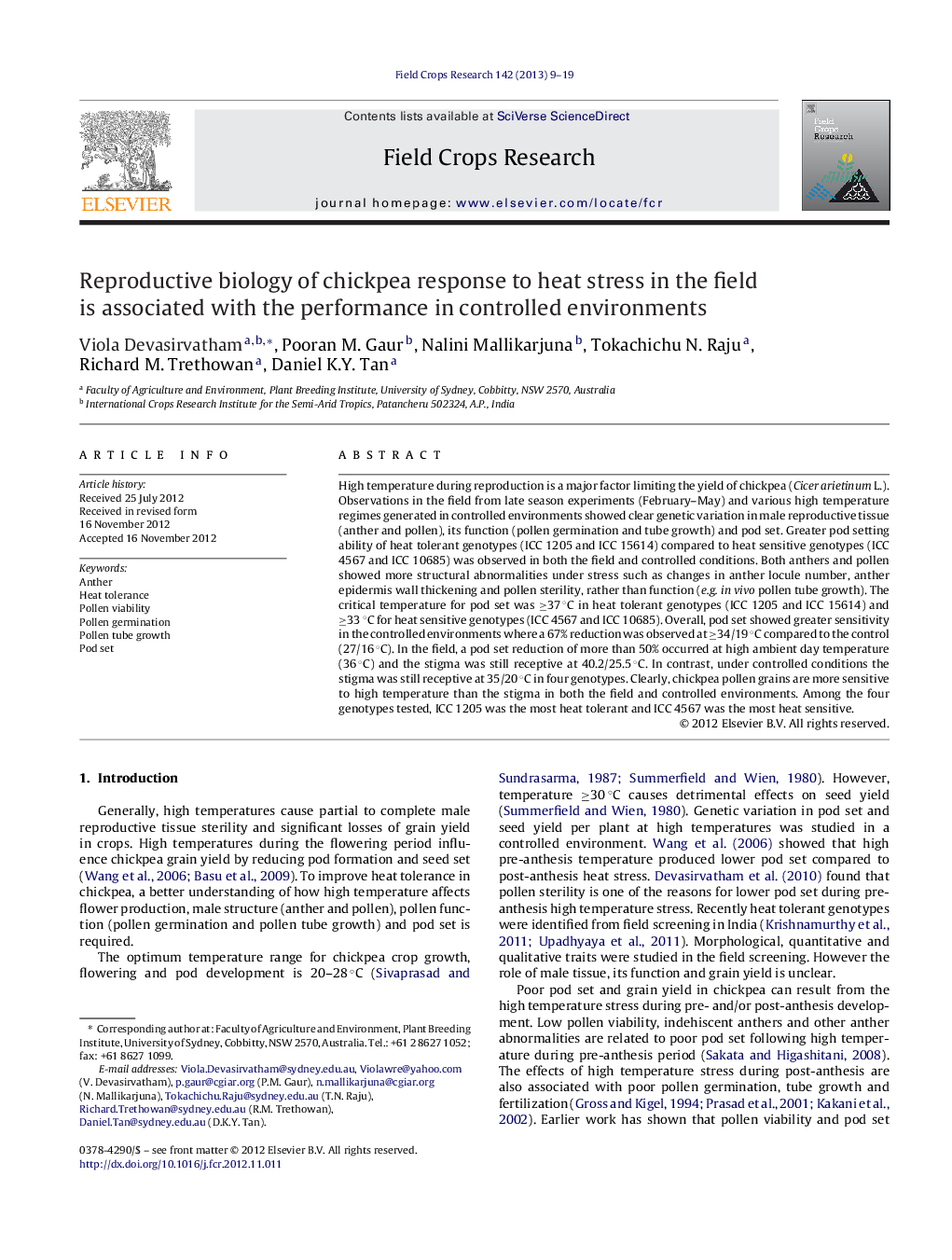| Article ID | Journal | Published Year | Pages | File Type |
|---|---|---|---|---|
| 4510258 | Field Crops Research | 2013 | 11 Pages |
Abstract
High temperature during reproduction is a major factor limiting the yield of chickpea (Cicer arietinum L.). Observations in the field from late season experiments (February-May) and various high temperature regimes generated in controlled environments showed clear genetic variation in male reproductive tissue (anther and pollen), its function (pollen germination and tube growth) and pod set. Greater pod setting ability of heat tolerant genotypes (ICC 1205 and ICC 15614) compared to heat sensitive genotypes (ICC 4567 and ICC 10685) was observed in both the field and controlled conditions. Both anthers and pollen showed more structural abnormalities under stress such as changes in anther locule number, anther epidermis wall thickening and pollen sterility, rather than function (e.g. in vivo pollen tube growth). The critical temperature for pod set was â¥37 °C in heat tolerant genotypes (ICC 1205 and ICC 15614) and â¥33 °C for heat sensitive genotypes (ICC 4567 and ICC 10685). Overall, pod set showed greater sensitivity in the controlled environments where a 67% reduction was observed at â¥34/19 °C compared to the control (27/16 °C). In the field, a pod set reduction of more than 50% occurred at high ambient day temperature (36 °C) and the stigma was still receptive at 40.2/25.5 °C. In contrast, under controlled conditions the stigma was still receptive at 35/20 °C in four genotypes. Clearly, chickpea pollen grains are more sensitive to high temperature than the stigma in both the field and controlled environments. Among the four genotypes tested, ICC 1205 was the most heat tolerant and ICC 4567 was the most heat sensitive.
Related Topics
Life Sciences
Agricultural and Biological Sciences
Agronomy and Crop Science
Authors
Viola Devasirvatham, Pooran M. Gaur, Nalini Mallikarjuna, Tokachichu N. Raju, Richard M. Trethowan, Daniel K.Y. Tan,
